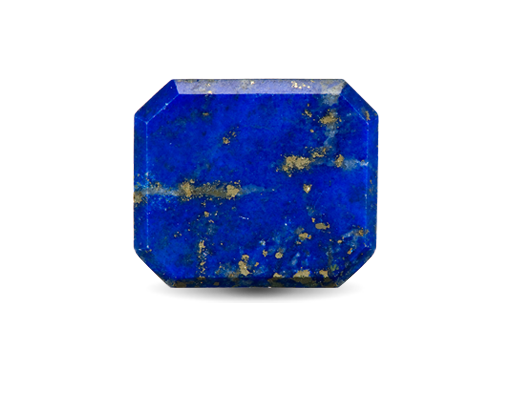LAPIS LAZULI Lapis is a beautiful rock; an aggregate of several minerals, mainly lazurite, calcite, and pyrite.
ABOUT LAPIS LAZULI
This ancient rock is an aggregate of several minerals. The three major minerals that comprise lapis are lazurite, calcite, and pyrite. The rock can also contain lesser amounts of diopside, amphibole, feldspar, or mica. Lazurite is the ingredient responsible for producing the gem’s most prized color—bright royal blue.
ANCIENT
Lapis was treasured by the ancient civilizations of Mesopotamia, Egypt, China, Greece, and Rome.
GLITTER
Golden flecks of pyrite create a sparkle in lapis lazuli.
MARCO POLO
In 1271, Marco Polo described ancient Bactria’s lapis mines.
FACTS
- Mineral: Rock
- Chemical composition: An aggregate
- Color: Greenish blue to violetish blue
- Refractive index: 1.500, sometimes 1.670
- Birefringence: None
- Specific gravity: 2.75 (+/- 0.25)
QUALITY FACTORS
Lapis lazuli is valued for its dark blue to violetish blue color.
COLOR
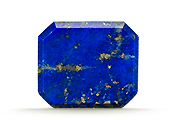
The gem’s most-prized color is a uniform dark blue to violetish blue, without any visible calcite.
CLARITY
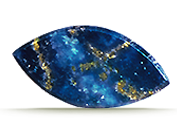
Top-quality lapis can display small, attractively distributed, gold-colored flecks of pyrite.
CUT
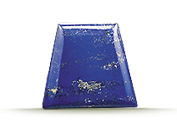
Lapis is typically cut into cabochons, beads, inlays, or tablets.
CARAT WEIGHT
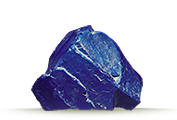
Lapis rough can be large enough to fashion into decorative carvings.

